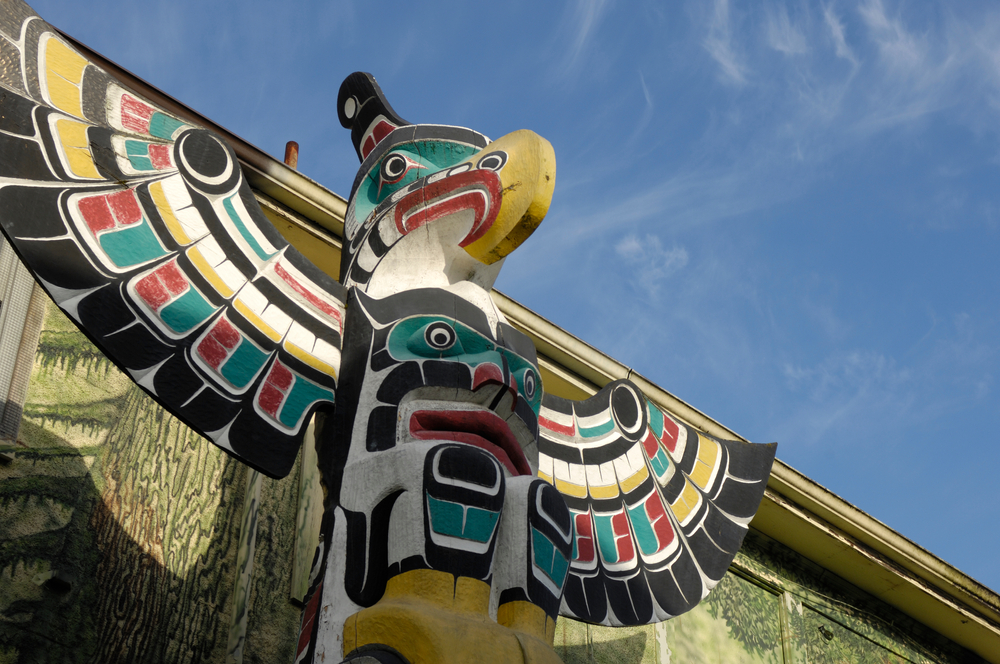An Introduction to the Spirituality of Indigenous Canadians

With the renewed focus on Canada’s history of forced assimilation against indigenous people, many are striving to learn more about their history and heritage.
The landmass now known as Canada was settled around 14,000 years ago. Evidence suggests that nomadic settlers reached Canada by crossing a land bridge revealed by a melting glacier. These nomads relied on herds of ancient mammals as a food source, and this new land bridge greatly expanded their hunting grounds.
Over time, indigenous Canadians would develop permanent settlements, agricultural practices, and vibrant societies. The rich and diverse cultures of Canada’s indigenous peoples are dispersed across three groups: Inuit, Metis, and the First Nations people.
European contact brought Catholicism to Canada. Sadly, the influence of European settlers culminated in a campaign of forced assimilation. Largely administered by Catholic churches, Canada’s residential school system sought to eliminate the culture and spiritual base of the indigenous tribes.
This policy has been the source of ongoing generational trauma. Additionally, it robbed the nation of the perspectives offered by alternative belief systems. Part of the process of healing and reconciliation requires a validation of indigenous spirituality and the richness it has to offer.
Key Ideas in Indigenous Spirituality
First, one must understand that the beliefs of the Inuit, Metis and First Nations people are not monolithic. In fact, the spiritual practices of these communities are as varied as the people themselves. Upon closer examination, though, consistent themes begin to emerge. As with any spiritual system, indigenous spirituality is multifaceted. Creation myths, spiritual practices, and Great Spirits are critical to understanding the principles of spirituality for the indigenous peoples of Canada.
Creation Myths
Much like other religions across the world, indigenous belief systems begin with stories about how the world came to be. The sacredness of the Earth is a common theme in the indigenous worldview, and this can be seen in their creation stories.
Among the First Nations, Inuit, and Metis people, various versions of the “Diver Myth” can be found. Passed down via oral tradition, this story tells of a protagonist who takes it upon themselves to bring the earth into existence. Depending on the community, this hero can take many forms. They can be supernatural, human, or even a combination of the two.
In the Diver narrative, the waters of the Earth are already present. The hero in the story dives down into the depths to retrieve mud and then fashions Earth from it.
Practices and Ceremonies
The institutions and practices that guide indigenous peoples are also diverse. However, what such practices hold in common is their relationship to Earth’s sacredness. For example, the Sun Dance is a sacred practice for First Nations people in Canada’s prairie regions. This midsummer festival was a community effort to pray for good fortune from the Earth that provided them life.
Great Spirits
The idea of a Great Spirit can be found across communities of indigenous people. While similar to the idea of God in Western traditions, the idea of a Great Spirit tends to be more abstract and less subject to wrath.
Much of indigenous spirituality is comfortable with the idea of uncertainty. Rather than doubling down on the idea that God is static, unchanging, and all-knowing, indigenous belief systems acknowledge the existence of a creator whose true nature can never be fully known. This idea is also known as the Great Mystery.
Spiritual practices are key to the way that societies interact with the world. As Canada looks to reexamine its history, expanding its capacity for belief and incorporating more perspectives into its worldview can create a richer experience for all.

